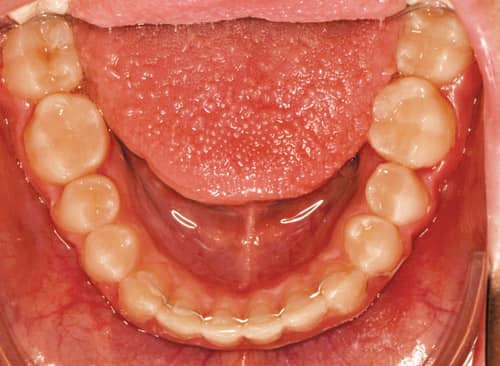Retention is one of the most powerful assets we can possess. Whether studying for an exam, preparing for some sort of athletic competition, or holding onto a memory, being able to retain or keep hold of something is often of utmost importance. Apply this concept to the field of orthodontics and you know exactly where I’m going with this, don’t you? Following orthodontic treatment, smile retention and preservation become an absolute top priority for both doctors and patients. Keeping patients’ smiles straight and supporting ongoing tooth alignment not only keeps patients happy—and hopefully boosts referrals—it allows for doctors’ smile design to remain intact, long after treatment has adjourned.
This brings us to orthodontic retainers, which to some patients’ surprise, have existed for thousands of years—longer than braces have even been around. From the first recorded use of retainers around 770 B.C., to a device called the “Bandeau” (a horseshoe-shaped metal band that was aligned with the back of patients’ teeth) and today’s solutions, the end game has been the same: preserve the patient’s smile.
As we all know, today, there are a variety of patient retainers to choose from, each for different purposes, preference, and practice philosophy—Hawley retainers, clear retainers and fixed retainers. While product design and choice varies, it’s common for my staff and myself to desire a solution that supports exceptional patient hygiene, fits well with quick and easy placement, and inspires us to treat patients with supreme confidence, knowing that we’re treating with an appliance that is flexible, yet strong enough to withstand breakage and force.
First, let’s talk about cleanliness and hygiene with retainers. While I currently run an orthodontic practice in Boiling Springs, SC, I actually started in periodontics; I completed my postgraduate residency in periodontology at the University of Tennessee, and then practiced in Greenville, SC, for a few years before deciding to pursue a career in orthodontics. Given this foundation, it comes as no surprise that oral hygiene—specifically when it comes to lingual fixed retainers—is paramount to successful smile retention and patient satisfaction.
As my practice evolved, we explored and expanded our lingual fixed retainer offerings. From exceptionally malleable braided and twisted retainers, to customized round wires, each offering served a specific purpose, but has certain restrictions, as most things do. While braided retainers offered flexible, easy placement, after several months, the wire could no longer withstand various forces and would often fray. The evolution and introduction of customized round wires worked to resolve this. This solution allowed me to bend and treat the wires to perfectly hit one specific point on each tooth. The key point to call attention to with this solution is on the word “perfectly.” Without the most perfect placement and perfect fit, the round wire would have the tendency to roll or rotate, making it difficult to place it in the intended position. In addition, because the wire needed to be a certain thickness/gauge for long term stability and it only contacted the tooth on a specific point, hygiene was compromised due to the undercuts in the retainer.

In the past, when using a bonded bar retainer on the cuspids, I would notice movement of the lower incisors due to the fact that they were not attached to the wire and the wire was not intimately contacting the tooth on the entire lingual surface. I attempted to remedy this situation by bonding each tooth or at least the teeth that were severely rotated prior to treatment. The result was that the bonding on the incisors would fail due to the natural tendency of teeth to move from the PDL and the rigidity of the wire which did not permit this. Therefore, the bonding would fail at the glue/wire interface which was the point of least resistance. When switching to the Memotain retainers, I no longer had this problem due to the custom fit and the flexibility of the nickel titanium wire. It is almost as if the teeth could move independently of one another without breakage. We use nickel titanium wires in our practices everyday because of the wire memory and biologic force levels they possess. Memotain retainers are made from these exact wires so it makes sense that this would be a beneficial retainer to use.
Having worked with Memotain for some time now, it has become clear that the convenience, confidence, and cleanliness it provides are second to none, and have set a new standard within my office. All of my patients comment on how comfortable it is, and many of them state that they didn’t even know it was there. This can be attributed to the extremely intimate fit and smaller wire size which together support a lower profile that is overall less intrusive for the patient. We have also found that less cement is needed to secure the retainer which eliminates the potential for flash and overhangs that is plaque retentive. The speed and ease of placement, convenience of a “perfect” fit, and cleanliness that Memotain supports have made it a welcome addition to my staff and practice. OP










